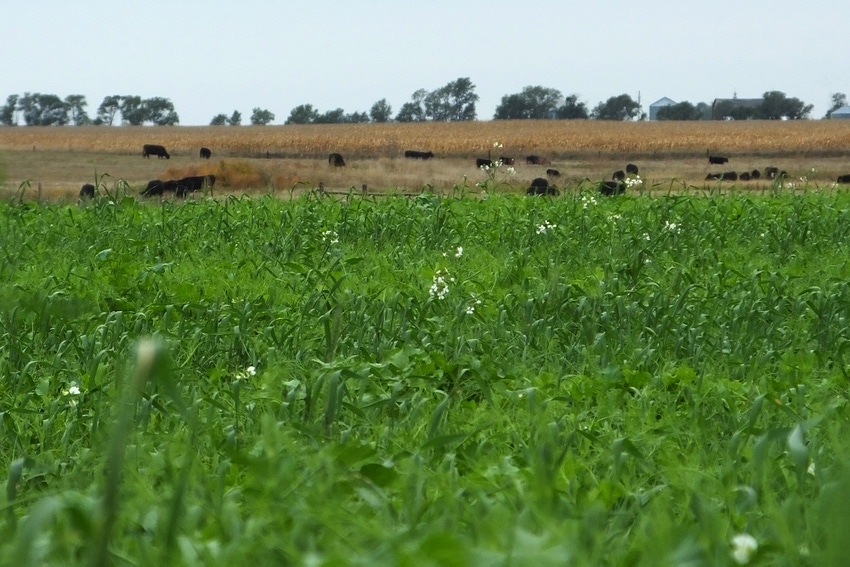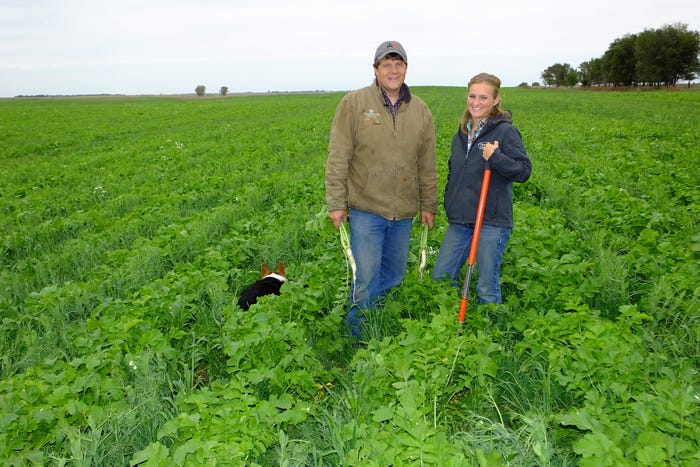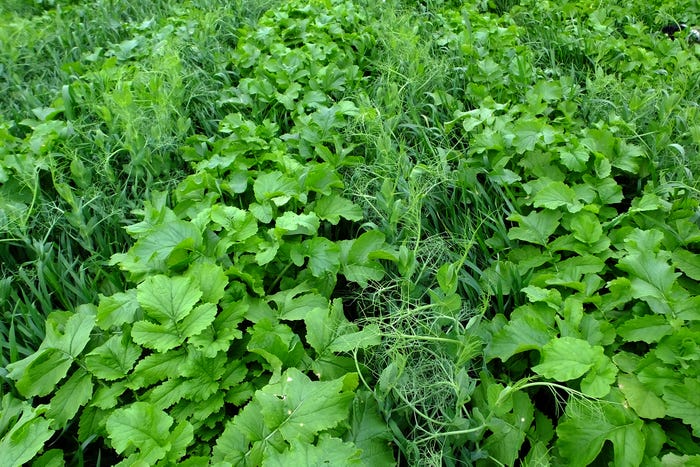September 14, 2017

Think Different.
Since only operators can sign up for USDA’s Conservation Stewardship Program (CSP), landowners may not give it much thought. They may not know about it, or see it as a program that benefits the tenant. Conversely, tenants may hesitate to involve their landlords in CSP discussions because landlords don’t get CSP payments. In truth, both the landlord and tenant can benefit from the program.
--------
When South Dakota farmers JP and Holly Heber first enrolled land in the Conservation Stewardship Program (CSP), they saw the move as a competitive advantage. The young couple from Spink County in northeast South Dakota produce “a little bit of everything” on land that’s mostly rented—corn, soybeans, wheat, small grains, and a cow-calf herd.

As they talked to landowners, they felt potential landlords understood the idea of stewardship and wanted tenants who would take care of their land.
“As we approached multiple landowners, we took our shoes off and tried to walk in their shoes,” Holly says. “Not everyone was ready initially for the new practices we’d be trying, but by years two and three, we were all starting to see how the practices were making differences in the land,” Holly says. “We’ve reenrolled land now, and both we and our landlords are benefitting.”
Cover crop benefits
In one case, the benefits weren’t apparent up front. “We started using cover crops without intending to bring in wildlife benefits,” JP says. “But when we used a multiple species mix of cover crops, the landlord noticed he was kicking out birds; he and his friends had some good pheasant hunting there. That helped cement the program and the practices for him.”
Holly says early on cover crops were a bit of a gamble, and without the CSP, she and JP would never have tried cover crops. “I think it’s a critical program for bringing new conservation technology to farmers and ranchers, with less financial risk. It lets you think outside the box and try new things, like radishes and peas for a bio strip till cover crop mix.” Bio strip till is no-tilling corn or soybeans precisely into the strip where rows of cover crops grew the previous fall. The cover crops used are often a brassica mix that doesn’t survive the winter—the roots of the cover crop loosen up the soil instead of using a strip till machine.

She says one point that’s been very difficult to get across to landlords is that they’re not tied into a 5-year rental agreement with a tenant in the CSP. “Landlords know it’s a five-year program for us, and they think that means they’re tied into renting to us for five years. But that’s not the case—CSP doesn’t obligate the landowner if he’s not the contract holder.”
Rented land optional
“An operator has to include all the land he owns in the CSP contract and plan,” says Shane Jordan, district conservationist for NRCS in Spink County, where there are more than 200 CSP contracts. “The land they rent can be included in their ag operation when owner certification is obtained.”
“Probably about half the people enrolling in CSP have included land they rent,” Jordan says. “The landowners may be out of state, and many are out of the farming or ranching loop. They often aren’t tuned into CSP and the benefits they might get from the program, but when they learn they aren’t tied to anything in the contract, and that all the improvements are positive for their land and other resources, they’ve been ok with it,” Jordan says.
He sees CSP as a win for both the tenant and the landowner. “The tenant gets the payment and benefits of the conservation practices, and is seen by the landowner as a tenant who cares about the long-term care of the land. One of the primary goals of CSP is to give producers opportunities to try new conservation activities and see if they want to continue them in the future. Almost all our early CSP enrollees have reenrolled for another five years, so that shows they do want to continue with the enhancements.”
“Even though he or she may not be totally aware of it, the landowner gets those soil health benefits and the wildlife habitat benefits that come with them.”
South Dakota tops in CSP acres
When Lyman County producer Reed Petersek signed a contract with USDA on August 9 to enroll his farm and ranch operations in CSP, it marked the 7 millionth acre of land in South Dakota to be entered into the program.
South Dakota’s CSP acreage is about 10 percent of the national acreage, and far and away more acreage than any other state in the program. About one in ten South Dakota farmers and ranchers are enrolled in CSP; contracts cover more than 15 percent of the cropland and rangeland in that state.
Sidebar article
CSP highlights
The basic premise of CSP—rewarding conservation-minded farmers and ranchers for conservation work already done and offering incentives for enhancements—is still the heart of the program. But new practices and more funding have been added in the past few years. The Conservation Stewardship Program has grown from a $9 million incentives program nationally when it began in 2009 to now offering financial and technical assistance each year of more than $1 billion on 70 million acres across the country. Things to know:
· The Conservation Stewardship Program pays participants for conservation performance — the higher the performance, the higher the payment. Producers get credit both for conservation measures they have already implemented and for new measures they agree to add.
· Producers sign a contract for five years, which can be renewed.
· Payments for enhancements and practices are made according to a payment schedule set by NRCS. Payments differ by state.
· CSP payments are made in the fall. NRCS documents enhancements and practices that have been carried out and spot-checks 10% of the contracts each year.
· Applicants with a solid conservation base already established who are willing to go beyond traditional conservation practices are best candidates for the program. The program is competitive—in South Dakota this year, only half the applicants ended up in CSP this year.
About the Author(s)
You May Also Like




